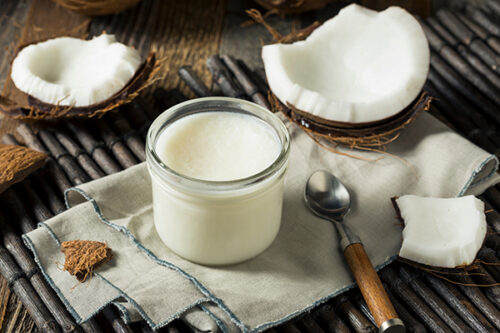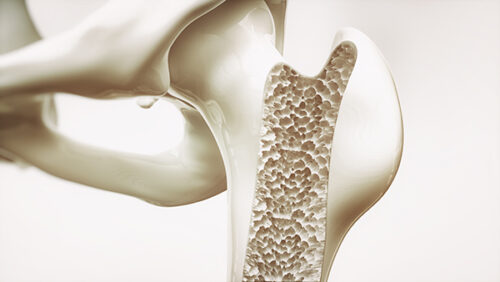Low Vitamin D: One Sign of Sunlight Deficiency
A low vitamin D level found in the blood is one sign of sunlight deficiency, just like high blood cholesterol is one sign of eating too much meat and cheese. A far-reaching campaign has been launched by doctors, health organizations, supplement companies, and pharmaceutical industries to fix the problem of sunlight deficiency with pills. Take vitamin D pills and the internal levels of this vitamin will increase, but 5 of 9 studies have shown no reduction in the risk of suffering from a fracture and 9 of 10 studies have shown no decrease in the most serious bone break—hip fractures. In addition, no reduction in deaths has been found with supplementation. Any hope for benefit is limited to people with severe deficiency (levels below 25 nmol/L). Exposure of the body to sunshine reduces the risk of cancer and heart disease, but the use of vitamin D supplements may increase the risk of both diseases. Scientific research has shown that supplements raise the vitamin D levels in a man’s blood, and increase his risk of prostate cancer. Vitamin D supplements given to women increase their “bad” LDL-cholesterol by 4.1%, and reduce their HDL/LDL ratio by 10.5%—changes in both risk factors reflect an increased risk for heart attack and stroke. Sunshine never causes a toxic overproduction of vitamin D in the body. However, like all other drugs, toxicity has been reported with the consumption of vitamin D supplements as pills and fortified foods, like cow’s milk. The first sign of toxicity is excess calcium appears in the urine (hypercalcuria) and then blood levels of calcium rise (hypercalcemia). Hypercalcemia over time results in bone loss, kidney stones, and calcification of organs, like the heart and kidneys.
Like proper food, sunshine is essential for life. But, wait a minute! Aren’t people supposed to stay out of the sun?
For the past half century people have been warned to stay out of the sun—wear protective clothing and use sunscreens to reduce premature aging of the skin and prevent skin cancers. The irritating effects of the sun’s energy may also cause pterygia (superficial blood vessel tissue on the whites of the eye) and reactivation of viral infections, such as lip herpes. There is no question overexposure should be avoided. But, have we gone too far with sun avoidance? I, along with the vast majority of the informed scientific community, believe so.
The best recognized consequence of sunlight deficiency is the bone-deforming children’s disease known as rickets. This condition is corrected by sunshine and/or vitamin supplements. A similarly-caused softening of the bone materials in adults, accompanied by the loss of minerals, is called osteomalacia. In most cases, sunlight deficiency causes no symptoms, but it can present as diffuse muscle and bone pain, and weakness, which can be misdiagnosed as fibromyalgia.
|
Sunshine Deficiency May Also Contribute To: |
|
Increased risk of cancer Poorer cancer survival Type-1 diabetes Decrease in insulin’s responsiveness Multiple Sclerosis Osteoporosis Decline in periodontal attachment (loose teeth) Cardiovascular disease |
The proposed benefits of sunlight overlap with those of diet and exercise. Traditionally, people living closer to the equator who are exposed to more sunlight also eat more plant foods; whereas those living at higher latitudes eat more meat and dairy products. Most exercise takes place outdoors (or at least it did until the recent popularity of health-clubs). Therefore, in general, more exercise also means more sunshine. In practical terms, separating the benefits of sunshine, a plant-food based diet, and moderate exercise is pointless mental gymnastics. A health-conscious person will choose all three.
Sunshine costs nothing and is effortless. Drawings in ancient cave dwellings indicate that people understood the importance of the sun for health, as well as warmth. During World War I sunlight therapy was used to heal soldiers’ wounds; and in the years that followed, hospitals and clinics were built for treating tuberculosis with sunshine. This phototherapy, also know as heliotherapy, was also prescribed during these times to treat chronic diseases, such as ulcers, leukemia, arthritis, gout, and diabetes.
|
Recognized Medical Uses of Sunlight: |
|
Systemic:
Psychological:
Skin:
|
Ultraviolet light of the sun’s spectrum has been used for centuries and is now standard medical therapy, most commonly prescribed for the debilitating skin condition psoriasis, and for chronic depression. Alone or in combination with medications, like vitamin D and Psoralen, ultraviolet-emitting artificial lightings clear the skin of psoriasis and relieve associated arthritis. Life-threatening depression, called seasonal affective disorder, is successfully treated by exposing patients to additional ultraviolet light by using ‘light boxes.’ The benefits of light therapy are temporary, stopping when the treatment is discontinued. Please note: the use of natural sunlight has been found to be superior to the use of light produced by artificial sources in both psoriasis and depression.
Excess sunlight is a recognized carcinogen, resulting in precancerous actinic keratosis and squamous and basal cell skin cancers. More than 1.5 million skin cancers are diagnosed annually in the US. Fortunately, these cancers are easy to detect, are almost never fatal, and are effectively removed by simple therapies, such Aldara cream, liquid nitrogen freezing, and laser treatments.
In 1936, Dr. Peller reported that among US Navy Personnel, those with frequent skin cancers seemed to possess immunity to more serious internal cancers, such as those of the breast, colon, and prostate. Consequently, he recommended deliberate induction of (non-melanoma) skin cancers as a ‘vaccination’ against life-threatening cancers. It is unlikely that skin cancer provides direct immunity to other cancers. Rather, the sunlight itself makes the body healthier and more cancer resistant.
Worldwide, the incidence of serious cancers, such as those of the breast, colon, and prostate, occur less commonly in geographic latitudes where sun exposure is greater. Another intriguing finding is that increased exposure to sunshine improves survival for people who already have cancer, including, those of the breast, colon, prostate, and lung, and melanoma and lymphoma.
Rather than focusing on non-profit, self-administered, non-toxic, highly-effective sunlight, the money-making spotlight of the medical, research, and pharmaceutical industries has been on vitamin D pills. (Similar to the way that dietary diseases, such as type-2 diabetes and heart disease, are treated—drug-therapy is the only game in town.) Apart from vitamin D synthesis there are a number of known ways that sunlight can affect a person’s health. Some of the discovered mechanisms involve the direct alterations of the immune system, locally and systemically; modulation of other hormones, like melatonin, calcitonin, and melanocyte stimulating hormone; and changing the number and function of cells present in the skin. Sunlight also establishes circadian rhythms. Undoubtedly, many important mechanisms for the benefit of natural sunlight remain to be discovered.
Vitamin D is known as the ‘sunshine vitamin,’ because it is made by the action of sunlight on the skin. Plant-derived sterols found in the skin are converted by ultraviolet sunlight into vitamin D. Two further steps occur in the liver and kidney in order to finalize the production of the physiologically active form of vitamin D. Its name comes from the fact that it was discovered after vitamins A, B, and C. Under usual circumstances, vitamin D is not a vitamin, defined as an organic substance which must be obtained in small amounts from the diet for growth and health. Rather, this substance is a hormone made within the body. This hormone has the rare property of being formed by ultraviolet light rather than by an enzyme, and should not be regarded as a nutrient. In real life, approximately 90% of the vitamin D that people use is formed within the skin through the action of sunlight—only 10% comes from diet and/or supplements.
The need for sun precautions these days is because populations have migrated from their natural environments. Light-skinned people vacation and live in places closer to the equator than their ancestors did—now the direct sunlight exposure is too intense for their fair skin-type. Dark skinned people now live in low-sunlight latitudes, wear cover-up clothing, and work all day inside; causing sunlight deficiency. The epidemic of obesity in people of all skin tones has added to the problem. Because vitamin D is fat soluble, excess body fat will pull vitamin D out of circulation thus contributing to deficiency.
Most of the benefits of sunlight, like vitamin D production, occur within the first 20 minutes of exposure. Applying sunscreen will increase the time requirement for exposure—but is almost never the cause of vitamin D deficiency. Exposing the body in a bathing suit to enough sun to make the skin just begin to turn red (one minimal erythema dose) is equivalent to ingesting 250 µg of vitamin D orally. Exposing the face, arms, and hands of a light-skinned person to 5 minutes of sun at noon two or three times a week at a latitude of Boston, MA in the spring, summer, or fall will cause the body to produce sufficient vitamin D to meet all of its needs. This time limit is skin-pigment-dependent. Asian-Indians may require 3 times, and Blacks may require 10 times as much exposure, as Whites under the same sunlight conditions. During wintertime, people must rely on their fat stores.
Vitamin D is a fat soluble vitamin that is stored for long periods of time mainly in the liver and the fatty tissues. When a person is completely deprived of sunlight, such as occurs with people on submarine missions or people living in extreme northern and southern latitudes, more than 2 months must pass before half of the vitamin D is depleted from the fat stores. A sufficiency of vitamin D throughout the year depends upon how much sunshine a person is exposed to on his or her summer vacation—summertime synthesized D being released from body fat throughout the winter months.
People who already have sun damaged areas of skin, such as on their arms or face, should keep these surfaces protected. Rather they should expose only undamaged areas, like their chest, back, abdomen and legs in order to collect the benefits of sunshine.
People following the typical Western diet and taking over-the-counter supplements consume less than 25 µg daily. Sufficient levels of oral vitamin D intake would require at least 50 µg daily. Therefore, without sunlight exposure, the amount of vitamin D in the diet and over-the-counter supplements is typically insufficient to produce optimal levels. Fish, including salmon, eel, pike, tuna, cod, and herring, have the highest amounts of vitamin D in their tissues (averaging 8 µg per 3.5 ounce serving). This means eating 20 ounces of fish daily to meet needs—which would also mean eating about 900 calories of fish fat and protein. Farmed salmon has only 25% of the vitamin D of wild salmon. Egg yolk, beef liver, and a few plant foods, like wild mushrooms, have very small amounts of vitamin D. Eight ounces of fortified cow’s milk or orange juice contains 2.5 µg of added vitamin D. Some cereals and breads are fortified with vitamin D. A one-a-day vitamin may contain 10 µg and over-the counter high potency supplements may contain 25 to 50 µg. Prescription vitamin D supplements are made from a much more potent form of vitamin D, with a greater risk of toxicity.
The expected consequences of eating foods high in calories, fat, and cholesterol like fish, eggs, beef liver, and milk would be obesity, type-2 diabetes, and even heart disease. Therefore, relying on foods for vitamin D runs the very real risk of making a person sick. Plus, non-white people who use lactose-containing dairy products can expect diarrhea, stomach cramps and gas, due to lactose intolerance.
No, otherwise healthy people who can expose themselves to life-giving sunshine should not bother with supplements. In addition to missing many valuable benefits of sunlight, taking supplements leads to the delusion that ‘the problem is solved;’ like when people take high blood pressure, cholesterol and diabetic pills; they think they are cured.
However, many people are unable or unwilling to get outdoors. Lack of information on the importance of sunlight and the unwillingness to leave their offices and homes will cause many otherwise healthy people to get inadequate sunlight. The elderly and infirm confined to nursing homes, long-term care facilities, and homes are at high risk of developing deficiencies. Living above latitudes of 35 degrees—New York, London, Moscow, as well as living under sunlight-blocking air pollution increases the risk of vitamin D deficiency, especially in the winter months and for darker-skinned people.
In the above instances, daily supplementation with 50 to 100 µg of over-the-counter vitamin D will correct the vitamin D blood level; which is good, but will not solve the real problem of sunlight deficiency.
* Circulating levels of an inactive stable form of vitamin D (25-OH vit D) measured in the blood is an accepted indicator of vitamin D status. Normal in various laboratories is considered 20 to 150 nmol/L. When the lower threshold of normal is set to 25 nmol/L then 12.2% of US African-American women are deficient; when the lower limit is 50 nmol/L then 42.4% are deficient.
References:
1) Wolpowitz D, Gilchrest BA. The vitamin D questions: how much do you need and how should you get it? J Am Acad Dermatol. 2006 Feb;54(2):301-17.
2) Abramson J, Wright JM. Are lipid-lowering guidelines evidence-based? Lancet. 2007 Jan 20;369(9557):168-9.
3) Tuohimaa P, Tenkanen L, Ahonen M, Lumme S, Jellum E, Hallmans G, Stattin P, Harvei S, Hakulinen T, Luostarinen T, Dillner. Both high and low levels of blood vitamin D are associated with a higher prostate cancer risk: a longitudinal, nested case-control study in the Nordic countries. Int J Cancer. 2004 Jan 1;108(1):104-8.
4) Heikkinen AM, Tuppurainen MT, Niskanen L, Komulainen M, Penttila I, Saarikoski S. Long-term vitamin D3 supplementation may have adverse effects on serum lipids during postmenopausal hormone replacement therapy. Eur J Endocrinol. 1997 Nov;137(5):495-502.
5) Jacobus CH, Holick MF, Shao Q, Chen TC, Holm IA, Kolodny JM, Fuleihan GE, Seely EW. Hypervitaminosis D associated with drinking milk. N Engl J Med. 1992 Apr 30;326(18):1173-7.
6) Holick MF. Vitamin D: importance in the prevention of cancers, type 1 diabetes, heart disease, and osteoporosis. Am J Clin Nutr. 2004 Mar;79(3):362-71.
7) Holubar K, Schmidt C. Historical, anthropological, and biological aspects of sun and the skin. Clin Dermatol. 1998 Jan-Feb;16(1):19-22.
8) Lucas RM, Repacholi MH, McMichael AJ. Is the current public health message on UV exposure correct? Bull World Health Organ. 2006 Jun;84(6):485-91.
9) Wharton JR, Cockerell CJ. The sun: a friend and enemy. Clin Dermatol. 1998 Jul-Aug;16(4):415-9.
10) Rybak YE, McNeely HE, Mackenzie BE, Jain UR, Levitan RD. An open trial of light therapy in adult attention-deficit/hyperactivity disorder. J Clin Psychiatry. 2006 Oct;67(10):1527-35.
11) Partonen T, Appelberg B, Partinen M. Effects of light treatment on sleep structure in seasonal affective disorder. Eur Arch Psychiatry Clin Neurosci. 1993;242(5):310-3.
12) Boulos Z, Campbell SS, Lewy AJ, Terman M, Dijk DJ, Eastman CI. Light treatment for sleep disorders: consensus report. VII. Jet lag. J Biol Rhythms. 1995 Jun;10(2):167-76.
13) Parry BL, Berga SL, Mostofi N, Sependa PA, Kripke DF, Gillin JC. Morning versus evening bright light treatment of late luteal phase dysphoric disorder. Am J Psychiatry. 1989 Sep;146(9):1215-7.
14) Postolache TT, Hardin TA, Myers FS, Turner EH, Yi LY, Barnett RL, Matthews JR, Rosenthal NE. Greater improvement in summer than with light treatment in winter in patients with seasonal affective disorder. Am J Psychiatry. 1998 Nov;155(11):1614-6.
15) Snellman E. Comparison of the antipsoriatic efficacy of heliotherapy and ultraviolet B: a cross-over study. Photodermatol Photoimmunol Photomed. 1992 Apr;9(2):83-5.
16) Snellman E, Lauharanta J, Reunanen A, Jansen CT, Jyrkinen-Pakkasvirta T, Kallio M, Luoma J, Aromaa A, Waal J. Effect of heliotherapy on skin and joint symptoms in psoriasis: a 6-month follow-up study. Br J Dermatol. 1993 Feb;128(2):172-7.
17) Simon JC, Pfieger D, Schopf E. Recent advances in phototherapy. Eur J Dermatol. 2000 Dec;10(8):642-5.
18) Krause R, Buhring M, Hopfenmuller W, Holick MF, Sharma AM Ultraviolet B and blood pressure. Lancet. 1998 Aug 29;352(9129):709-10.
19) Barth J, Kohl V, Hanefeld M. [Behavior of lipids, other serum parameters and cardiovascular functions in ultraviolet therapy] Hautarzt. 1994 Oct;45(10):702-7. German.
20) Reichrath J. The challenge resulting from positive and negative effects of sunlight: how much solar UV exposure is appropriate to balance between risks of vitamin D deficiency and skin cancer? Prog Biophys Mol Biol. 2006 Sep;92(1):9-16.
21) Porojnicu A, Robsahm TE, Berg JP, Moan J. Season of diagnosis is a predictor of cancer survival. Sun-induced vitamin D may be involved: a possible role of sun-induced Vitamin D. J Steroid Biochem Mol Biol. 2007 Mar;103(3-5):675-8.
22) Robsahm TE, Tretli S, Dahlback A, Moan J. Vitamin D3 from sunlight may improve the prognosis of breast-, colon- and prostate cancer (Norway). Cancer Causes Control. 2004 Mar;15(2):149-58.
23) Zhou W, Suk R, Liu G, Park S, Neuberg DS, Wain JC, Lynch TJ, Giovannucci E, Christiani DC. Vitamin D is associated with improved survival in early-stage non-small cell lung cancer patients. Cancer Epidemiol Biomarkers Prev. 2005 Oct;14(10):2303-9.
24) Berwick M, Armstrong BK, Ben-Porat L, Fine J, Kricker A, Eberle C, Barnhill R. Sun exposure and mortality from melanoma. J Natl Cancer Inst. 2005 Feb 2;97(3):195-9.
Vieth R. What is the optimal vitamin D status for health? Prog Biophys Mol Biol. 2006 Sep;92(1):26-32.
Smotkin-Tangorra M, Purushothaman R, Gupta A, Nejati G, Anhalt H, Ten S. Prevalence of vitamin D insufficiency in obese children and adolescents. J Pediatr Endocrinol Metab. 2007 Jul;20(7):817-23.
Vieth R. What is the optimal vitamin D status for health? Prog Biophys Mol Biol. 2006 Sep;92(1):26-32.
Poskitt EM, Cole TJ, Lawson DE. Diet, sunlight, and 25-hydroxy vitamin D in healthy children and adults. Br Med J. 1979 Jan 27;1(6158):221-3.
Lu Z, Chen TC, Zhang A, Persons KS, Kohn N, Berkowitz R, Martinello S, Holick MF. An evaluation of the vitamin D3 content in fish: Is the vitamin D content adequate to satisfy the dietary requirement for vitamin D? J Steroid Biochem Mol Biol. 2007 Mar;103(3-5):642-4.
Recommended Articles

The Real Coconut Oil Miracle: How a High-Fat, High-Calorie Condiment Became a “Superfood”

Holiday Meal Planning & Recipes







